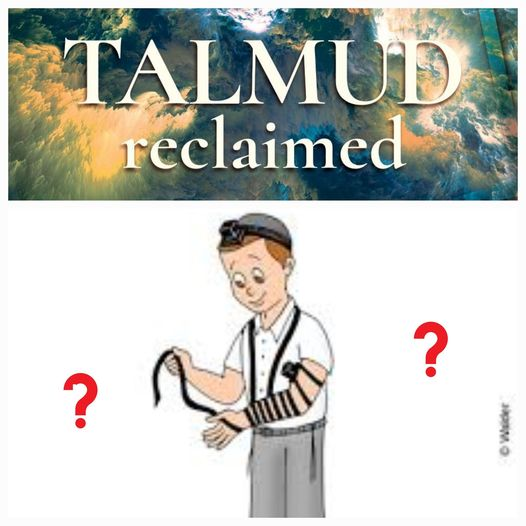Might a humble Tannaitic teaching, almost concealed at the end of the seventh chapter of Tractate Chullin, provide a key insight into how sages of the Mishnah dealt with some of the challenges raised by biblical critics?
The discussion relates to the biblical prohibition against eating Gid Hanashe (sciatic nerve), which a verse in yesterday’s reading tells us is a response to the thigh injury inflicted upon Ya’akov at the conclusion of his angelic wrestling match:
“Therefore, the children of Israel may not eat the displaced tendon, which is on the socket of the hip, until this day, for he touched the socket of Jacob's hip, in the hip sinew.” (Bereshit 32:33)
But does this prohibition apply to all animals – since Ya’akov’s family had not yet been instructed to avoid non-kosher animals? No – reply the sages to Rabbi Yehudah: this law was only commanded later at Sinai. Once it had been taught, however, it was placed back into the book of Bereishit – an editorial gloss that would make readers immediately aware of the reason for this otherwise inexplicable law.
Numerous Midrashim indicate that the earlier sections of the Torah already existed in some form prior to the Sinai revelation. Rashi, in his commentary to Shemot 24:7, cites some of these teachings in order to identify the “Scroll of the Covenant” read out by Moshe at the start of the Sinai ceremony as the earlier portions of the Torah.
Aside from the law of the sciatic nerve, which other verses of the book of Bereishit may have been subsequently edited in by Moshe?
One popular candidate is the phrase “And the Canaanites were then in the Land” (Bereishit 12:6) – words which give the appearance of a subsequent editorial gloss to describe to later readers the nature of the inhabitants of Israel when Avram made his initial journey there. Rather than reflecting post-Mosaic interference with the text, however, as some critics have speculated, the insertion makes perfect sense as an editorial insertion by Moshe to the inchoate opening book of the Torah. With the desert-dwelling Israelites poised to launch a military campaign to invade the Land of Canaan, the episode of the Spies demonstrates that the nation’s faith in God’s promise was often frail. It may have been important, therefore, for the prophetically-inspired Moshe to highlight the fact that God’s initial promise to Avram that his descendants would inherit the Land was delivered (in the following verse) at a time when the Canaanites were already there.
This approach can also shed some light on the peculiar passages at the conclusion of yesterday’s Torah reading. With Ya’akov and Eisav seemingly reconciled, and the Torah’s attention about to switch to recounting the eventful escapades of Ya’akov’s children, we are treated to a lengthy farewell to Eisav and his offspring. Particularly perplexing is a list of subsequent Edomite monarchs “who reigned in the Land of Edom before the reign of any Israelite king”. This list clearly post-dates its placement in the midst of the Patriarchal passages. So who might have inserted this strange subsection?
If we see this in the context of the previous examples of Moshe clenching the editorial quill, it can be suggested that he is demonstrating to the Israelites that the promises and blessings to Eisav have already been fulfilled. Like Yishmael before him, who was the subject of divine promises to Avraham, Eisav departs the Patriarchal family with a description of his clans, kings and conquests. A description with which the Torah draws a line under their minimal merits and turns its attention to the building blocks of the Chosen Nation. These nations, implies Moshe, should no longer be of immediate concern to the Israelites as they prepare to enter the Land.
A further more profound possibility of Moshe’s agenda here may be to contrast Edom’s speedily-gained material and worldly success with that of Yaakov’s descendants who would have to go through 400 painful years of national development in the iron crucible of Egypt before emerging as a chosen nation to bear God’s word to the world.
Ultimately, however, the Israelites’ teachings and light would survive for thousands of years after Edom had ceased to exist. In this way, the respective national fates of Ya’akov and Eisav’s nations can be seen to mirror the foundations set by their founders. Eisav values the instant gratification of lentil soup over the protracted and difficult but ultimately more rewarding spiritual route of bechor and beracha – firstborn and spiritual blessings. While both Eisav and his descendants enjoy initial ascendancy over Ya’akov, however, with a series of Edomite kings reigning before Ya’akov’s nation is properly established, it would be the teachings and values of Ya’akov’s descendants which would prevail in the long run. At the onset of the Messianic era, we are told, Ya’akov’s victorious nation will “ascend Mount Zion to judge the mountain of Esau”.
It would seem, therefore, that a proper appreciation of the early editorial influence of “M” can shed a great deal of light on a number of passages from the book of Bereishit.
First posted on Facebook 3 December 2023, here.





.jpg)



